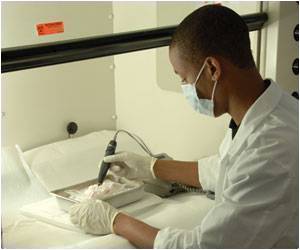A new anti-fungal mechanism that could enable combination therapy with fluconazole has been identified by scientists.

Fungi cause bothersome diaper rashes, oral thrush, athlete''s foot, and vaginal yeast infections, but they are also responsible for life-threatening infections in the immunocompromised, including patients receiving transplants, people with HIV/AIDS, cancer patients, and the elderly. Severe invasive fungal infections have a mortality rate of 30-50% and cause an estimated 1.5 million deaths worldwide annually.
Doctors rely on three main drug classes-the azoles (e.g., fluconazole), the echinocandins, and amphotericin-to treat these severe infections, but often with limited success. Many strains of pathogenic yeast, such as Candida albicans (C. albicans) can develop resistance to these drugs. Although combining therapies is a potent method to combat drug resistance in bacteria, antifungal drugs often perform poorly when used in combination due to their complex pharmacology and antagonistic antifungal mechanisms. When used individually, current antifungal drugs can have significant toxicities that are markedly enhanced when the drugs are used in combination.
"Pharmaceutical companies are abandoning the development of antifungals," says Lindquist, who is also a Howard Hughes Medical Institute investigator and a professor of biology at MIT. "Fungi are much more similar to us than bacteria, so it is hard to find agents that attack them but not us."
To identify new potential antifungals that could be combined with fluconazole, a team of Whitehead and MIT scientists screened 300,000 compounds, selecting one with the most apparent potential-Inz-1-for further study. Their work is described online this week in the journal Cell Chemical Biology.
Inz-1 inhibits the growth of C. albicans in media lacking glucose but only partially impairs growth when glucose is present, indicating that Inz-1 interferes with mitochondrial function. Indeed, the researchers determined that Inz-1 targets the cytochrome B protein required for mitochondrial production of ATP. The authors then worked with synthetic chemist Jean-Baptiste Langlois in the laboratory of Stephen Buchwald in the MIT Department of Chemistry to iteratively synthesize and test analogs of Inz-1 to improve its properties. This work led to Inz-5, which exhibited dramatically improved potency and selectivity for fungal cytochrome B. Although cytochrome B is highly conserved across humans and many pathogenic fungi, including Cryptococcus neoformans, Aspergillus fumigatus, and Rhizopus oryzae, Inz-5 exploits important differences in the amino acid sequence of the protein that enable selectivity for fungi.
Advertisement
Not only does hitting cytochrome B disable C. albicans'' virulence, but the fungus''s altered mitochondrial function means that the yeast is unable to adapt to the nutrient-deprived conditions present within the host, particularly inside macrophages. Instead of punching its way out of a macrophage that has engulfed it, the yeast remains trapped and loses its fight against the immune system.
Advertisement
Source-Newswise










